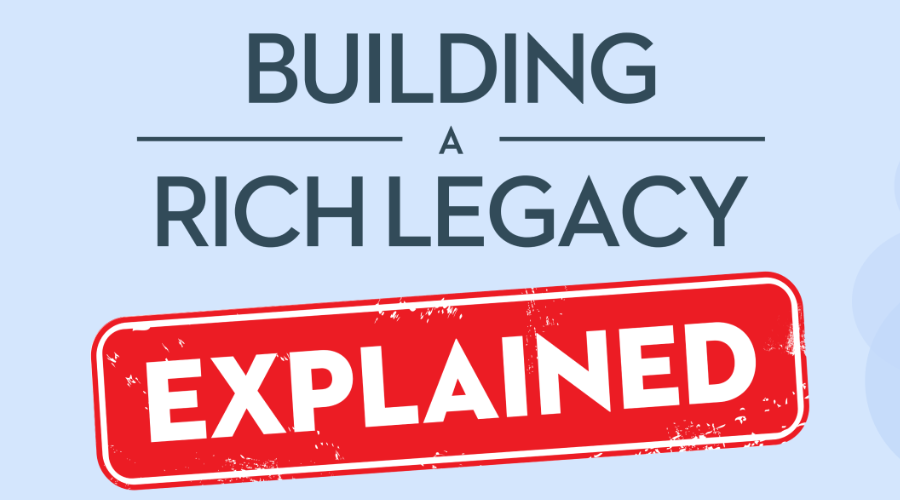There are many retirement writers in Canada and the advice provided varies among the experts, but with the increasing cost of living and the unpredictable real estate market, retirement planning has gotten lost somewhat on the priority list.
Saving for your retirement is encouraged in Canada as soon as you start working. This motivates you to get a head start on saving for your retirement years.
How to plan for your retirement
What is the best time to establish a retirement savings plan? Your 20s, 30s or 40s? You’ve likely heard this before, but the earlier you start saving for your retirement, the better. Even if you start by just putting a fraction of your pay away every month – it all adds up. If you start retirement planning in Canada in your late 40’s, you would need to either put more aside each year or save for longer than if you had started in your early 20’s. The reason for this is because of the power of compounding returns.
Steps to plan for retirement:
- Start saving early: As mentioned above, the age you start saving can have a big impact on how much you need to save for your retirement – and how much time you have to save. Put away as much as you can each pay. An easy way to do this, without having to think about it, is to set up a pre-authorized program that automatically takes a set amount and tucks it away into a savings account or investment of your choosing (like a mutual fund). The interest you will earn on these deposits may grow significantly over time.
- Set your retirement goals: How much you will need to save will depend on how you want to spend your retirement. Knowing the type of lifestyle you want to live during your retirement years will affect the amount you will need to save for retirement. If you enjoy spending time with family at home, rather than traveling and dining out, the amount you will need to save will be very different.
- your future travel plans
- existing or new hobbies you may want to take up in retirement
- the age you would like to retire (and if you plan to continue “working” after you retire)
- if you have children or grandchildren to support
- whether you’ll have debt to pay, such as a mortgage
- Compare current spending with expected retirement spending: Keep track of how much you are spending now (on your needs vs. wants) and think about how these expenses could change once you retire. You can use tools like this budget calculator from the Government of Canada to help you. Thankfully, most retirees have considerably less expenses than when working. They no longer have to pay for commuting costs, work outfits and lunches. And their mortgage is often paid off by now. But making a post-retirement budget will help you to calculate exactly how much you’ll need to finance your dream retirement.
- Plan for unexpected costs: As with life in general, there can be unexpected costs that arise when you retire (or right before your planned retirement age). Make sure you set aside some money in an emergency fund to help cover any unexpected costs that may arise. It is typically advised to set aside at least three months of living expenses.
- Meet with a financial planner: Consulting with an expert can help to make sure you are considering different types of retirement plans that work for your retirement goals. A retirement professional can help structure your accounts in a tax-efficient matter, work with you to determine what types of retirement plans (RRSP, TFSA, Investment Accounts, etc.) you should be taking advantage of and how much you should be contributing to each one, as well as help you understand how much you should be saving for your retirement.
Think about:
How much should you save for retirement?
Many people wonder what the magic number is that they should be saving for retirement. While some financial planners suggest that you should be saving as much as 15% of your current income for retirement, this is not a one size fits all solution. There are a number of factors that come into play.
According to Statistics Canada, the average annual expenditure for retirees, per household, is $58,121, which is around 57% of the average income of the 40-54 age group. But how much is the right amount for you? How much you will need to have in your retirement savings plan is as individual as you are. You may need more or less than the average Canadian, it all depends on your unique needs and the lifestyle you would like to maintain in retirement and there is no such thing as a single “best” retirement savings option.
Make sure you take your government benefits into account when planning how much you need to save for retirement. Canada Pension Plan (CPP), Old Age Security (OAS) and Guaranteed Income Supplement (GIS) are all federal retirement benefits that can affect how much you would need to save.
The Canadian Retirement Income Calculator by the federal government is a comprehensive and easy to use retirement calculator that will help give you a sense of how much retirement income you should expect.
What are the different types of retirement plans?
There are many ways that Canadians can save for their retirement. Some of the retirement savings plans include:
- RRSPs: Contributing to a Registered Retirement Savings Plan (RRSP) helps you grow your money while offering significant tax benefits. The government gives a maximum RRSP contribution limit each year, based on your previous year’s tax return. If you don’t use up the maximum, the amount gets carried forward to the next year. Try to maximize your RRSP contributions as it can lower your taxable income, and your retirement planning contributions grow tax-free. For more information on RRSPs, visit the Canada Revenue Agency website here.
- A TFSA: A Tax-Free Savings Account (TFSA) allows Canadians over the age of 18 to save and/or invest money in an account that is not taxed at withdrawal. It is similar to a regular savings account, but it allows you to hold a range of investment products and allows your savings to grow tax-free. There is an annual limit as to how much you can put in the account, but if you have never contributed before you could open one and contribute a maximum of $57,500 as of January 2018. Some experts believe this to be the best type of retirement plan (better than an RRSP), but it is an individual choice. For more information on the TFSA, visit the Canada Revenue Agency website here.
- Company Pension Plans: If your company offers a pension plan, make sure to take advantage of that as soon as you start working. Making the maximum contributions from the start can really pay off. If your company doesn’t offer a pension plan, check to see if they offer any TFSA or RRSP matching programs – it’s like free cash! They can also act like an insured retirement plan, since the company is providing the match.
- Investment Accounts: As well as your RRSP and TFSA, many people look to taxable investment accounts to grow their retirement savings. These accounts can hold a wide variety of products such a stocks, bonds, ETFs, mutual funds, GICs and cash. Depending on your time horizon and risk tolerance, the mix of investments that are suitable for you will differ.
How can the CHIP Reverse Mortgage® help in retirement planning?
There is a growing trend for Canadians entering retirement with little or no retirement savings at all. And what’s worse, debt is growing so fast in Canada that our average household debt ratio has seen an increase of 70% in just 20 years. But what solution do these Canadians have?
Getting the money you need
The CHIP Reverse Mortgage is a different kind of retirement savings plan. It is a retirement planning solution that can help you extend the life of your retirement savings and is becoming one of the best retirement savings options. The CHIP Reverse Mortgage gives you access to the equity in your home without the need to move or sell.
Homeowners 55+ can access up to 55% of the appraised value of their home in tax-free cash, with no regular mortgage payments (not even interest) required. The CHIP Reverse Mortgage solution can be a great way for Canadians to access some of their home equity to relieve them of the financial stress in their retirement years. It can also be a great way to help improve their lifestyle, help with expenses and give them the opportunity to live retirement the way they have always wanted.
To find out how much tax-free cash you could qualify for, call us at 1-866-522-2447 and take the first step towards living retirement your way.
































